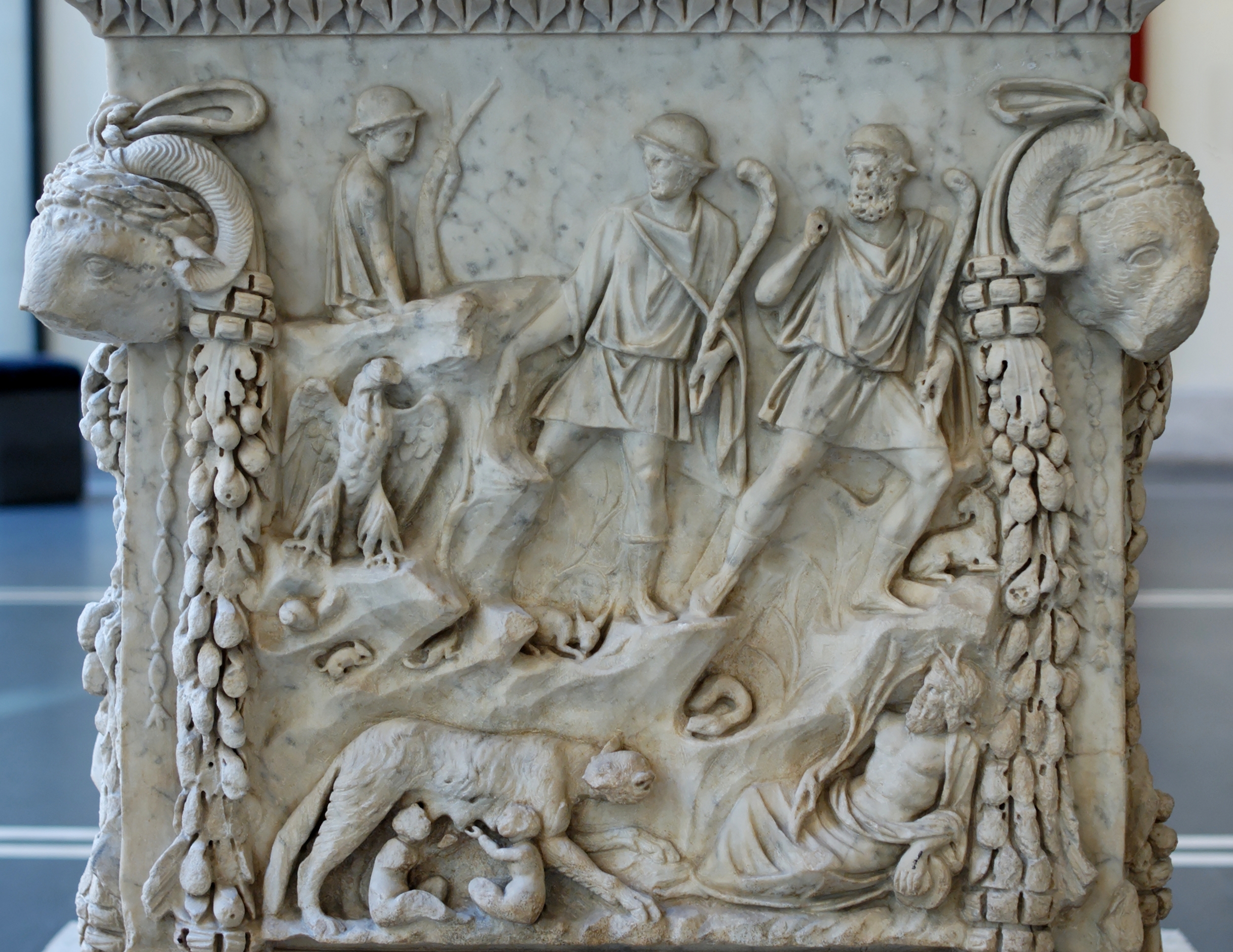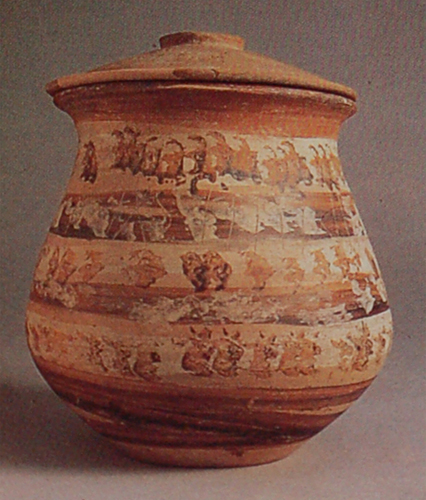|
Castellieri Culture
The Castellieri culture developed in Istria during the Early and Middle Bronze Age, and later expanded into Friuli, Dalmatia and the neighbouring areas. It lasted for more than a millennium, from the 18th century BC until the Roman conquest in the 3rd century BC. It takes its name from the fortified settlements, ''Castellieri'', which characterized the culture. The term was coined by Carlo Marchesetti. The ethnicity of the Castellieri civilization is uncertain. The first ''Castellieri'' were built along the Istrian coast and show a similar monumental architecture with Cyclopean masonry which can also be found in the Mycenaean civilization. The Monkodonja hillfort shows that the earlierst ''Castellieri'' were built already in the 19th century BC. The ''Castellieri'' were fortified settlements, usually located on hills or mountains or, more rarely (such as in Friuli), in plains. They were constituted by one or more concentric series of walls, of rounded or elliptical shape in I ... [...More Info...] [...Related Items...] OR: [Wikipedia] [Google] [Baidu] |
Istria
Istria ( ; Croatian language, Croatian and Slovene language, Slovene: ; Italian language, Italian and Venetian language, Venetian: ; ; Istro-Romanian language, Istro-Romanian: ; ; ) is the largest peninsula within the Adriatic Sea. Located at the top of the Adriatic between the Gulf of Trieste and the Kvarner Gulf, the peninsula is shared by three countries: Croatia, Slovenia, and Italy,Marcel Cornis-Pope, John Neubauer''History of the literary cultures of East-Central Europe: junctures and disjunctures in the 19th And 20th Centuries'' John Benjamins Publishing Co. (2006), Alan John Day, Roger East, Richard Thomas''A political and economic dictionary of Eastern Europe'' Routledge, 1sr ed. (2002), 90% of its area being part of Croatia. Most of Croatian Istria is part of Istria County. Geography The geographical features of Istria include the Učka/Monte Maggiore mountain range, which is the highest portion of the Ćićarija/Cicceria mountain range; the rivers Dragonja/Dragogna, ... [...More Info...] [...Related Items...] OR: [Wikipedia] [Google] [Baidu] |
Elerji
Elerji (; previously ''Jelarji'', ) is a small settlement in the City Municipality of Koper in the Littoral region of Slovenia on the border with Italy Italy, officially the Italian Republic, is a country in Southern Europe, Southern and Western Europe, Western Europe. It consists of Italian Peninsula, a peninsula that extends into the Mediterranean Sea, with the Alps on its northern land b .... Name The name of the settlement was changed from ''Jelarji'' to ''Elerji'' in 2017. References External linksElerji (Jelarji) on Geopedia Populated places in the Urban Municipality of Koper {{Koper-geo-stub ... [...More Info...] [...Related Items...] OR: [Wikipedia] [Google] [Baidu] |
Ab Urbe Condita Libri (Livy)
The ''History of Rome'', perhaps originally titled , and frequently referred to as (), is a monumental history of ancient Rome, written in Latin between 27 and 9 BC by the Roman historian Titus Livius, better known in English as "Livy". The work covers the period from the legends concerning the arrival of Aeneas and the refugees from the fall of Troy, to the city's founding in 753 BC, the expulsion of the Kings in 509 BC, and down to Livy's own time, during the reign of the emperor Augustus. The last event covered by Livy is the death of Drusus in 9 BC. 35 of 142 books, about a quarter of the work, are still extant. The surviving books deal with the events down to 293 BC (books 1–10), and from 219 to 166 BC (books 21–45). Contents Corpus The ''History of Rome'' originally comprised 142 "books", 35 of which—Books 1–10 with the Preface and Books 21–45—still exist in reasonably complete form. Damage to a manuscript of the 5th century resulted ... [...More Info...] [...Related Items...] OR: [Wikipedia] [Google] [Baidu] |
Livy
Titus Livius (; 59 BC – AD 17), known in English as Livy ( ), was a Roman historian. He wrote a monumental history of Rome and the Roman people, titled , covering the period from the earliest legends of Rome before the traditional founding in 753 BC through the reign of Augustus in Livy's own lifetime. He was on good terms with members of the Julio-Claudian dynasty and was a friend of Augustus. Livy encouraged Augustus’s young grandnephew, the future emperor Claudius, to take up the writing of history. Life Livy was born in Patavium in northern Italy, now modern Padua, probably in 59 BC. At the time of his birth, his home city of Patavium was the second wealthiest on the Italian peninsula, and the largest in the province of Cisalpine Gaul (northern Italy). Cisalpine Gaul was merged into Italy proper during his lifetime and its inhabitants were given Roman citizenship by Julius Caesar. In his works, Livy often expressed his deep affection and pride for Patavium, and the ... [...More Info...] [...Related Items...] OR: [Wikipedia] [Google] [Baidu] |
Ancient Peoples Of Italy
This list of ancient peoples living in Italy summarises the many different Italian populations that existed in antiquity. Among them, the Romans succeeded in Romanizing the entire Italian peninsula following the Roman expansion in Italy, which provides the time-window in which most of the names of the remaining ancient Italian peoples first appear in existing written documentation. Many names are exonyms assigned by the ancient writers of works in ancient Greek and Latin, while others are scholarly inventions. Nearly all of these peoples and tribes spoke Indo-European languages: Italics, Celts, Ancient Greeks, and tribes likely occupying various intermediate positions between these language groups. On the other hand, some Italian peoples (such as the Rhaetians, Camuni, Etruscans) likely spoke non- or pre-Indo-European languages. In addition, peoples speaking languages of the Afro-Asiatic family, specifically the largely Semitic Phoenicians and Carthaginians, settled and ... [...More Info...] [...Related Items...] OR: [Wikipedia] [Google] [Baidu] |
Prehistoric Italy
The prehistory of Italy began in the Paleolithic period, when members of the genus ''Homo'' first inhabited what is now modern Italian territory, and ended in the Iron Age, when the first written records appeared in Italy. Paleolithic In prehistoric times, the landscape of the Italian Peninsula was significantly different from its modern appearance. During glaciations, for example, the sea level was lower and the islands of Elba and Sicily were connected to the mainland. The Adriatic Sea began at what is now the Gargano Peninsula, and what is now its surface up to Venice was a fertile plain with a humid climate. The arrival of the first known hominins was 850,000 years ago at Monte Poggiolo. The presence of ''Homo neanderthalensis'' has been demonstrated in archaeological findings dating to c. 50,000 years ago (late Pleistocene). There are about 20 unique sites, the most important being that of the Grotta Guattari at San Felice Circeo, on the Tyrrhenian Sea south of Rome; a ... [...More Info...] [...Related Items...] OR: [Wikipedia] [Google] [Baidu] |
Adriatic Veneti
The Veneti (sometimes also referred to as Venetici, Ancient Veneti or Paleoveneti to distinguish them from the modern-day inhabitants of the Veneto region, called ''Veneti'' in Italian language, Italian) were an Proto-Indo-Europeans, Indo-European people who inhabited northeastern Italy, in an area corresponding to the modern-day region of Veneto, from the middle of the 2nd millennium BC and developing their own original civilization along the 1st millennium BC.Storia, vita, costumi, religiosità dei Veneti antichi at www.venetoimage.com (in Italian). Accessed on 2009-08-18. The Veneti were initially attested in the area between Lake Garda and the Euganean Hills; later they expanded until they reached borders similar to those of the current Veneto region. According to the archaeological finds (which also agr ... [...More Info...] [...Related Items...] OR: [Wikipedia] [Google] [Baidu] |
Carni
The Carni (Greek: Καρνίοι) were a tribe of the Eastern Alps in classical antiquity of Celtic language and culture, settling in the mountains separating Noricum and Venetia. They probably gave their name to Carso, Carnia, Carinthia, and Carniola. History They are usually considered a Gaulish tribe, although some associate them with the Venetic peoples, a group closely related to but probably distinct from the Celts. Their area of settlement isn't known with precision. Strabo confines them to the mountains, while Ptolemy assigns them two cities near the Adriatic coast. They are likely eponymous of the regions of Carnia, Carniola and Carinthia.Sir William Smith (ed.), ''Dictionary of Greek and Roman geography'', Volume 1p. 522/ref> The first historical date related to the arrival of the Carni in "Akileja" is 186 BC, when some 50,000 Carni, composed of armed men, women and children, descended towards the plains (in which they previously used to winter) and on a hill t ... [...More Info...] [...Related Items...] OR: [Wikipedia] [Google] [Baidu] |
Anja Hellmuth Kramberger
Anja Hellmuth Kramberger, born Hellmuth (18. February 1978 in Berlin) is a German archaeologist, author and researcher. Education After graduating from the Droste-Hülshoff-Gymnasium in Berlin, Anja Hellmuth studied Prehistoric archaeology, Near Eastern archeology and Ancient history at the Free University of Berlin (German: Freie Universität Berlin). She completed her Master of Arts (''Magister Artium'') with highest honors at the Free University of Berlin in 2005 and received her PhD with ''summa cum laude'' in 2008 under the supervision of Biba Teržan and Bernhard Hänsel. For her master's thesis she was awarded the “ Rudolf-Virchow-Förderpreis” by the Berlin Society for Anthropology, Ethnology, and Prehistory (German: Berliner Gesellschaft für Anthropologie, Ethnologie und Urgeschichte), a learned society for the study of anthropology, ethnology, and prehistory founded 1869 in Berlin. Anja Hellmuth received a scholarship (NaFöG) from the Berlin Senate, which sup ... [...More Info...] [...Related Items...] OR: [Wikipedia] [Google] [Baidu] |
Pula
Pula, also known as Pola, is the largest city in Istria County, west Croatia, and the List of cities and towns in Croatia, seventh-largest city in the country, situated at the southern tip of the Istria, Istrian peninsula in western Croatia, with a population of 52,220 in 2021. It is known for its multitude of ancient Roman Empire, Roman buildings, the most famous of which is the Pula Arena, one of the best preserved Roman amphitheaters. The city has a long tradition of wine making, fishing, shipbuilding, and tourism. It was the administrative centre of Istria from ancient Rome, ancient Roman times until superseded by Pazin in 1991. History Pre-history Evidence of the presence of ''Homo erectus'' one million years ago has been found in the cave of Šandalja near Pula. Pottery from the Neolithic period (6000–2000 BC), indicating Colonization, human settlement, has been found around Pula. In the Bronze Age (1800–1000 BC), a new type of settlement appeared in Istria, called ... [...More Info...] [...Related Items...] OR: [Wikipedia] [Google] [Baidu] |
Nesactium
Nesactium ( Istrian dialect: ''Vizače'', , ) was the capital of the Histri tribe and later a Roman city. Its remains are located in southern Istria, Croatia, between the villages of Muntić and Valtura. History In pre-Roman times the Histri inhabited the Istrian peninsula. They were connected to the prehistoric Castellieri culture and some theories state a later Celtic influence. It is believed that their main economic activities were trade and piracy all over the ancient Mediterranean Sea. At one time the Histri were ruled by their legendary king Epulon. In 177 BC the town was conquered by the Romans and destroyed. Rebuilt upon the original Histrian pattern, it was a Roman town until 46–45 BC, when the Ancient Greek colony Polai was elevated to Pietas Iulia, today Pula. The town was located on the ancient road Via Flavia, which connected Trieste to Dalmatia Dalmatia (; ; ) is a historical region located in modern-day Croatia and Montenegro, on the eastern shor ... [...More Info...] [...Related Items...] OR: [Wikipedia] [Google] [Baidu] |





